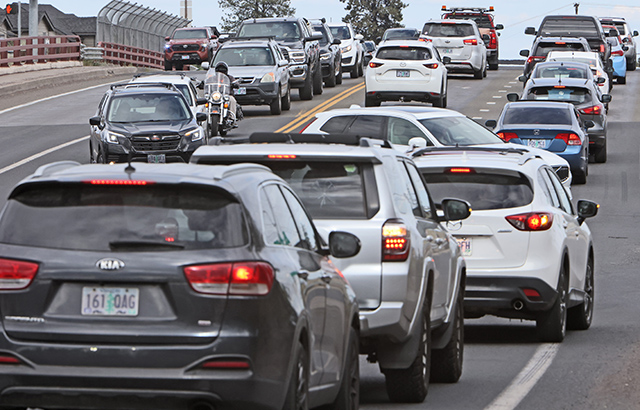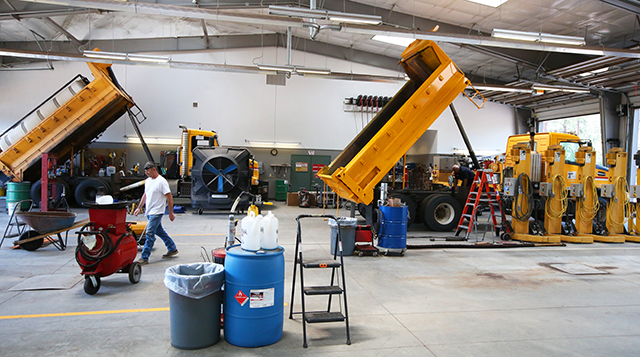PSU releases unique footage of 2017 eclipse
Published 12:00 am Wednesday, August 22, 2018

- A stereographic view of Oregon during the total solar eclipse in 2017. Marine fog can be seen at left, and smoke from the Milli Fire can be seen at right. (Portland State University/Submitted photo)
A year ago on Tuesday, all of Central Oregon’s hotels were booked. Gas stations were low on fuel; St. Charles hospitals were stockpiling resources, and there was even a shortage of portable toilets in the area. A large swath of Central Oregon was in the path of the Aug. 21, 2017 total solar eclipse, and places like Madras and Redmond were top viewing locations.
That same day, however, instead of fighting tens of thousands of visitors for the best view, Portland State University engineers were launching camera-equipped balloons to capture the show from Corvallis.
Trending
On the anniversary of the 2017 solar eclipse, PSU released one-of-a-kind imagery of the celestial event.
Cameras attached to weather balloons were sent up to 100,000 feet above the Earth’s surface to capture images of the eclipse on its path over Oregon. A team of about 20 engineering students and alumni worked under project adviser and PSU faculty member Mark Weislogel to complete the yearlong project.
One of those students was Rihana Mungin, the project’s lead undergraduate student.
“Portland State has had a history with high-altitude ballooning, and there was a bit of a hiatus. So when the eclipse was happening this was a great opportunity for us to get back into it,” Mungin said.
The project was funded in large part by the Oregon Space Grant Consortium of NASA.
“There was a national program to fund 55 university teams to image or to study the eclipse all the way across the country, and the Portland State team had a group,” Weislogel said. “We’ve always had an interest in this anyway so we set up a bunch of balloons.”
Trending
Five, to be exact.
On the morning of the eclipse, those five balloons launched from Corvallis, capturing high-resolution, panoramic photographs of the eclipse. Of the five, only one balloon did not return safely from its mission. Instead it traveled about 80 miles west and crashed somewhere at sea.
“The pictures are beautiful from up there,” Weislogel said. “But to get one of these, the panoramas of the whole thing, we’re not aware of it being done before. We got the sun, moon and Earth in the same shot.”
The balloons’ retrieval was a project all its own.
“They rise so high, and it’s so cold up there that the balloon — which grows to the size of a house — freezes and then shatters, and when that happens everything falls,” Weislogel said. After falling freely for about 40,000 feet, a parachute inflates and the equipment takes around 20 minutes to hit the ground. Or, wherever they fall.
“We had to climb some trees,” Weislogel said about retrieving the balloons post-flight.
“There’s no we — Mark climbed the trees,” Mungin chimed in, laughing.
The team gathered more than 180,000 photos. PSU alumnus Ben Semerjian is not only “a gifted scientist,” according to Weislogel, but also works in image processing. Joining the team, Semerjian stitched together over 1,000 images to create the unique video that Portland State released Tuesday.
“To make a stitch of just arbitrary pictures taken from all over the place looking down from these camera rigs was tough,” Weislogel said. “So it took about two months before we saw the first output.” After about eight months of progress, the video still wasn’t completed. The team decided to wait until exactly a year after the eclipse to release its work.
Weislogel emphasized the one-of-a-kind educational value that the project offered PSU participants. “This is the kind of thing that brings everything together,” he said. “At the beginning there’s the creative process; there’s the calculations of whether or not this is possible; there’s all the weather information, so it has all of the challenges of the subject matter: electronic programing, designing, 3D printing, assembly, all that stuff. It brings in the realness of it; it’s not just a school-project deadline, it’s an eclipse deadline.”
— Reporter: 541-383-0312, echandler@bendbulletin.com








